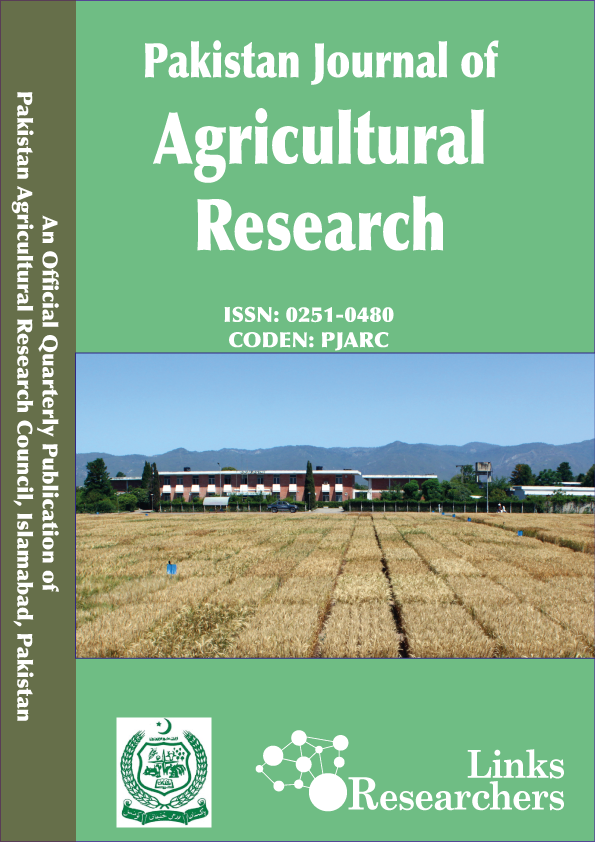Impact of Planting Methods on Performance of PK-386 and Super Basmati at Different Locations
Impact of Planting Methods on Performance of PK-386 and Super Basmati at Different Locations
Shahbaz Hussain1*, Atif Naeem1, Asif Ameen2, Muhammad Yousuf3, Imtiaz Hussain3 and Muhammad Ehsan Safdar4
ABSTRACT
Field trials were conducted at eight different locations in Gujranwala and Sheikhupura districts during summer season, 2020 to determine the most profitable and economical planting method for PK-386 and Super Basmati cultivars of rice. Three planting methods viz. direct seeded rice (DSR), mechanical transplanting of rice (MTR) and conventional transplanting of rice (CTR) were compared at various locations. Data on yield-contributing traits and paddy yield were recorded. An Economic analysis was also carried out to determine the cost-effective planting method. Rice cultivars PK-386 and Super Basmati produced the highest number of tillers (410 and 350 m-2) under DSR, while the lowest number (276 m-2 and 253 m-2) from CTR, respectively. Number of grains per panicle and 1000-grain weight remained unaffected from planting methods whereas paddy yield was significantly influenced by various planting methods. The highest paddy yield of PK-386 and Super Basmati (5.59 t/ha and 4.34 t/ha) was recorded from DSR followed by MTR (4.82 t/ha and 3.92 t/ha), while the lowest paddy yield (4.50 t/ha and 3.80 t/ha) was observed from CTR. Economic analyses exhibited the highest net income (Rs.132308 and 302684 ha-1) from PK-386 and Super Basmati, respectively grown under DSR. Among all the three rice planting methods, DSR attained the highest paddy yield as well as net income therefore, it is advisable that farmers should adopt DSR technology for growing both varieties.
To share on other social networks, click on any share button. What are these?






